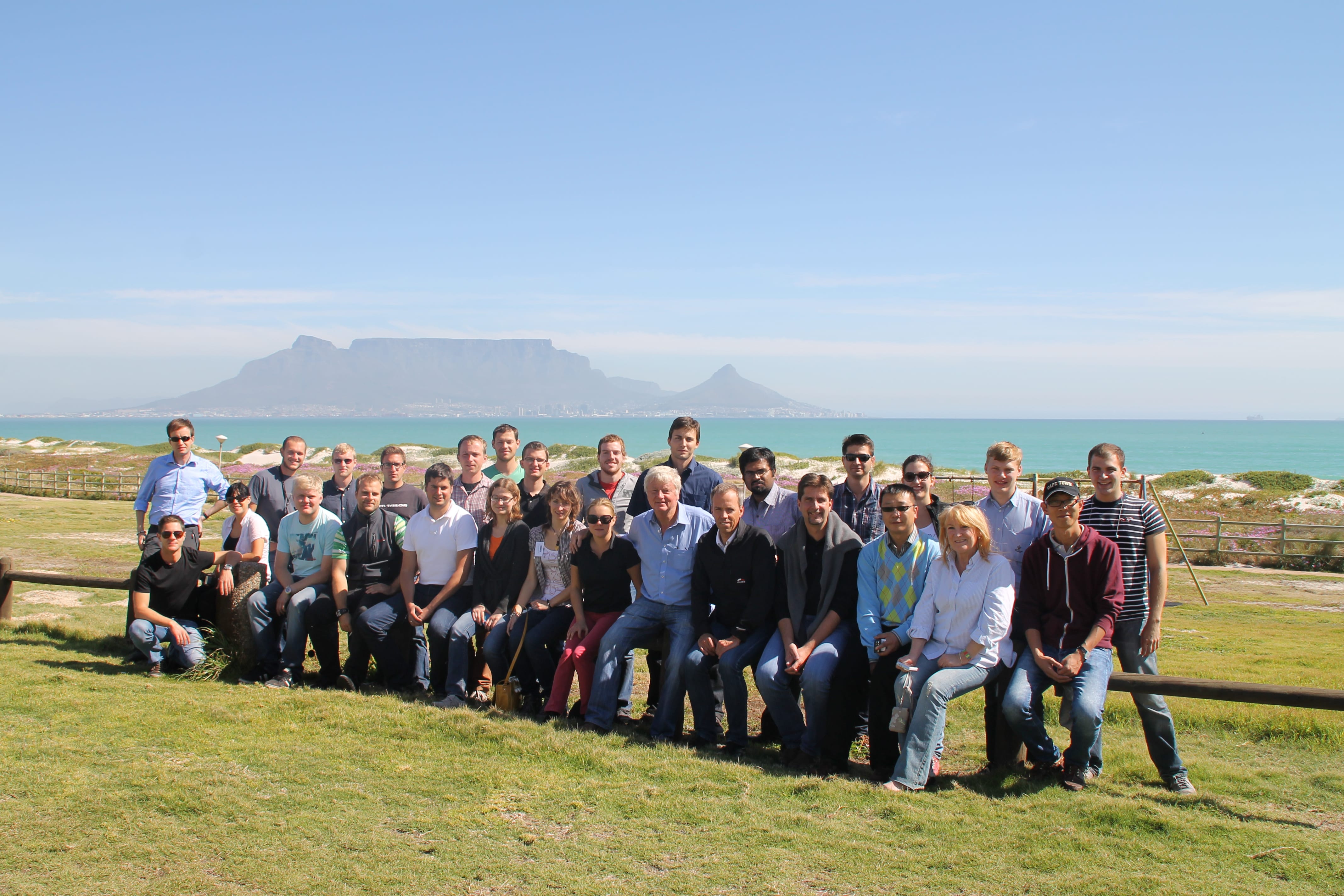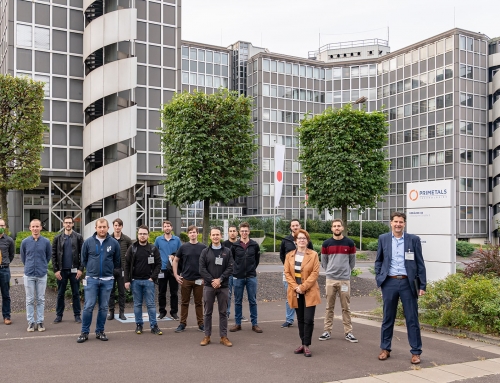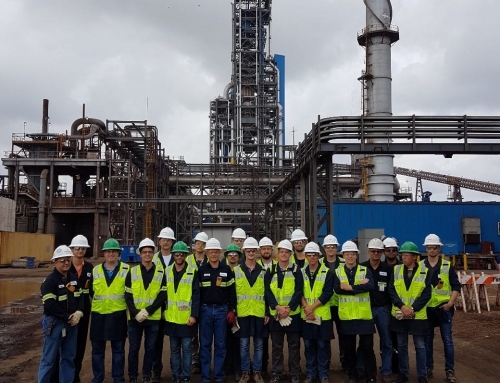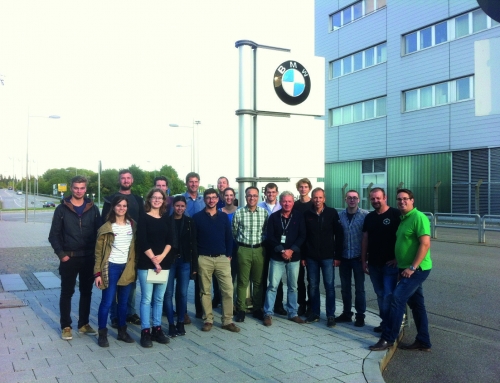In September 2013, 17 students, ten researchers and two professors of the Chair of Ferrous Metallurgy travelled towards South Africa, to become acquainted with the local steel industry. The group visited the most notable steelworks, as well as an iron ore mine, a platinum mine and two universities.
After a 20-hour trip the group reached the initial point of the field trip, Johannesburg. At the airport we were friendly welcomed by our tour guides, Dr. Bernd Strohmeier and his wife Mia. Originally he is a styrian, who studied Metallurgy in Leoben and shifted to South Africa 42 years ago. His knowledge of the South African metals industries was an important input for our whole tour program.
Johannesburg, which has more than 4 million inhabitants, is one of the economical centres of Africa. Founded by gold miners at the end of the 19th century, the mining and metals tradition is still alive. During our sightseeing tour through Jo-burg the excavations of the old gold mines were visible everywhere. We visited one of these old mines, Gold Reef City, which is also accessibly for tourists and includes a leisure park and a tourists mine. Also at the second day mining was a big issue. We visited an iron ore mine in Thabazimbi. This mine is operated by AngloAmerican and supplies iron ore to the local market. In contrast to Thabazimbi, AngloAmerican also operates another mine in Sishen, which is focused on the export. Also our third day was a mining day. In Marikana we visited the open pit mining of Tharisa, where platinum- and chrome- concentrate are produced. Afterwards we went to one of the highlights of the field trip, a safari tour at Pilanesberg. In a beautiful African landscape we were able to discover elephants, giraffes, lions, rhinos, antelopes and more in the wild. At the fourth day our journey continued to Witbanks, the coal capital of South Africa. We had the possibility to visit two plants in one day: Evraz Highveld in Witbanks, who produces steel and vanadiumoxide and Columbus Steel in Middelburg, who is the biggest stainless steel producer in South Africa. Especially the metallurgical plants at Evraz were unique. From the rotary kiln for prereduction, to a submerged arc furnace and a shaking ladle for de-vanadisation of the pig iron, it was a very exotic plant for European metallurgists. The next day we continued our trip in the capital of South Africa, Pretoria. In the morning we visited the Voortrekker monument and the Union Building, in the afternoon we were welcomed by the Department for Material Science and Metallurgical Processes. The presentations and lab tours led to new contacts and an exchange of knowledge. In the evening we departed to Vanderbijlpark, where we had a delicious spitbraii for dinner. Next day the visit of the biggest steel plant in South Africa was planned. At Arcelor Mittal Vanderbijlpark we saw the only “real” integrated steel mill of our trip with conventional steel production by the blast furnace- converter-route. Unfortunately, this enormous plant is not producing with all capacities because of the difficult economical surroundings. At the end of our first week we finally made a sunset river cruise on the Vaal River and enjoyed a typical African stew, the potjie, for dinner.
On Saturday the group had to say goodbye to the typical African landscape around Johannesburg and left to Cape Town by plane. After we arrived, we enjoyed a sightseeing tour through Cape Town with a hop on- hop off bus. Our first day in Cape Town ended at the Waterfront, where we also enjoyed the nightlife of Cape Town. On Sunday we had a real tourists program including the Cape of Good Hope, an ostrich farm, a penguin colony and finally a seafood dinner in a traditional fish restaurant at the Atlantic coast. On Monday morning we went to Cape Town University (UCT), where we visited the labs. In the afternoon we left to the inner country to visit the wine area around Franschhoek. There Dr. Till Noska, a metallurgist who studied in Leoben, welcomed us and showed us around including wine tasting in two wineries. In the evening we enjoyed dinner in Stellenbosch. On Tuesday we visited one of the biggest Titaniumoxide- and Zirkoniaproducers in the world, Tronox Namakwa Sands in Saldanha. One of its by-products is foundry pig iron with high quality. In the afternoon we decided to get up to the table mountain, some of the group of course in the real Austrian style, by hiking. The gratification for the exhausting tour was a beautiful sunset behind the Atlantic horizon. On Wednesday we finally left Cape Town towards Saldanha. On this day we visited Arcelor Mittal in Saldanha, a unique plant in the world. The connection of Midrex- and Corex-plant, the ConArc-converter and the thin slab casting were incredible for both students and researchers, especially because everybody of us had seen such aggregates only in books. Finally, we spent the evening in the Saldanha Bay. On the last day we had two plants in our program: the iron ore port of Saldanha and the rolling mill of Duferco. The natural deep water port of Saldanha is the final stage of the railway line to Sishen mine and handles around 70 Mio. t/a. The rolling mill of Duferco was our last metallurgical sight in our field trip program (so we have really started with the ore and finished with a semi-finished product!). The plant consists of several cold rolling mills, annealing furnaces, a galvanizing mill and produces cold rolled coils as well as galvanized products. We spent the final evening at Muisbosskerm, a fish and seafood restaurant directly at the Atlantic beach. After our final meeting on the next morning, the majority of the group started their trip back home to Austria. Several students used the opportunity and stayed in South Africa for one more week.
The experiences and adventures of this journey certainly will be treasured by the participants. Not only the insights in the steel industry of an foreign country, but also the knowledge about foreign cultures are formative aspects for the personality and future of the young engineers. Sincere thanks are given to the steel plants and universities for their kind acceptance, the interesting guides and the excellent hospitality.






